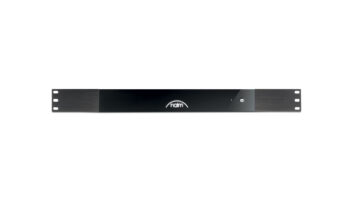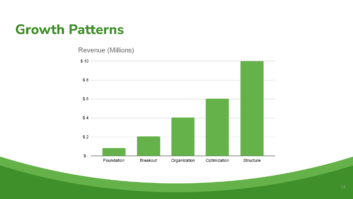
ThinkStock
We always seem to hear from our competitors and friends around the industry how hard it is to find and keep good people. CEDIA is coming this week and we’ll all have a chance to take some time off from our businesses to review our plans and come up with ways to improve our game. In the spirit of collaboration I figured this was as good a time as any to share with you what we’ve been doing to find, hire, and retain key talent.
Finding
For starters we’ve stopped trying to find ready-made Universal Soldiers (that dream employee we all pine for—great with customers, highly technical—yet relatable and capable of producing a ton of billable revenue), realizing that they usually come to us with bad habits and are usually high performance coupled with low values. If that doesn’t make any sense, see some of my previous articles about the importance of evaluating values and performance in any new hire. After much soul-searching, the nasty truth of looking for Universal Soldiers usually is an attempt to make up for a lack of good training programs within the organization and the sheer amount of time it takes to train a greenhorn (someone off the street with good attitude and aptitude). Imagine starting a tree farm tomorrow with an open field. The first few years, life sucks. Over time, however, you start to gain an edge on your competition because you’re finding the bad eggs sooner and have a really deep bench.
Because we aren’t looking for Universal Soldiers it means that we can go after rookies. The problem with hiring rookies is that you need to train the rookies to do EVERYTHING (putting a heavy burden on the organization to develop regimented training programs). The only problem with attempting to train rookies is that when we originally decided to develop the training program, there weren’t any training materials available at the CEDIA (industry) level. I realized we were going to have to build our own. We’ve done that and as a result been able to onboard new hires from local technical high schools and community colleges.
Hiring
By partnering with educational institutions we’ve managed to hire half a dozen candidates over the last few years. Some of them have worked out well and some of them haven’t. The common thread above all else is that we’re getting someone earlier on in their career path, which means they’re likely to stay with us longer and adapt to our culture.
Another benefit to hiring employees (especially installation talent) earlier in their career path is that we can bring somebody in at a lower wage and incrementally raise them over time (contrast that with the Universal Soldier approach where we’re going to find the hotdog employee and bring them in at the top of our pay scale. That approach usually results in another employee inadvertently finding out how much the new hire makes and morale takes a nosedive (hopefully none of you have had this experience). Since we started evaluating employees for values fit over anything else, it’s made our hiring decisions a lot easier and also a lot more difficult if we find an employee is high-performance but proves to be a “values challenge” to us right off the bat. I saw a great quote on the TV show Shark Tank where one of the sharks told a poor potential deal that “It ends as it begins.” That’s stuck with me and haunted me as I’ve often recalled initial gut feelings about employees who didn’t work out over time after waiting too long to let them go. We now refuse to hire anyone if they don’t fit with our values and agree that any high-values employees are coachable and should be onboarded immediately. Some of our new hires work out and some of them don’t, but all of them know exactly where they stand and exactly what the first year in our company looks like because of our training program. We’re looking for people who embody the following values: patience, professionalism, tenacity, curiosity, excellence, integrity, passion, and creativity.
Keeping
So what about keeping your shiny new, expensive onboarded employee? They make great targets for your competitors because you spent a lot of money training them. So how do you keep them around? There are a lot of theories around carrots, sticks and human behavior. We use positive reinforcement, incentive alignment and open communication as much as possible.
I learned in a business class I took last year (Grow To Greatness II–available on Coursera) about two theories of human behavior that prevail in managerial thought: Theory X and Theory Y. Theory X managers believe employees are liabilities and if you give them an inch they’ll take a mile. Theory Y managers believe employees are assets to be nurtured over time and they need to be given latitude and the freedom to feel empowered. Theory Y managers want their employees to feel like they matter. I’ve struggled with these theories over the years. It’s a nasty thing to look at yourself in the mirror and realize you’re fundamentally a Theory X person. There are a ton of reasons to give over to Theory X thought. There are even Theory X employees who deserve that sort of treatment. In the spirit of creating a fundamentally Theory Y organization, we are always cognizant of where a candidate sits on that continuum before they’re hired. After onboarding, we provide a Theory Y environment where open dialogue is encouraged and new policy changes are often adopted on the spot based on feedback from the field.
During exit interviews, employees usually cite reasons other than money as their primary motivators for leaving. They leave because they aren’t heard (or perceive that they aren’t heard—but then again, what’s the difference?), feel disrespected, or feel that they’re not making a difference (which makes them unhappy, and unhappy people don’t stick around the places that make them unhappy). Livewire is an open door shop. Anyone can speak their mind anytime. Feedback matters and we reward ideas that change the way we do business.
Every employee at Livewire is coached and has a customized career development plan. In the coming months, we are implementing a mentorship program to ensure that each new employee is teamed up with a senior team member to help guide them. We’re also implementing a long-awaited bonus program based on performance using a method called profit after controllables (a big thank you to my mentor Bill Barnes for that one!) where each employee no matter who they are in the company (bookkeeper, sales, or installer) has a set of items on the P&L chart of accounts which they are responsible for and measured against on a quarterly basis and earn bonuses based on performance. This helps the employees feel engaged while a percentage of that compensation is deferred encouraging them to stick around over time to vest in the deferred compensation.
Our strategies and plans aren’t perfect. We lose employees, we gain employees and over time we continue to hone our craft. In the spirit of our CEDIA conference this week I wanted to take some time out to talk about finding, hiring and keeping talent. As a shameless plug I’ll be participating in one of the panels on Saturday at CEDIA, which will be covering this exact topic (don’t worry, there will be plenty of new content from me!).
I wish you a happy and prosperous CEDIA.
Stay frosty and see you in the field!




